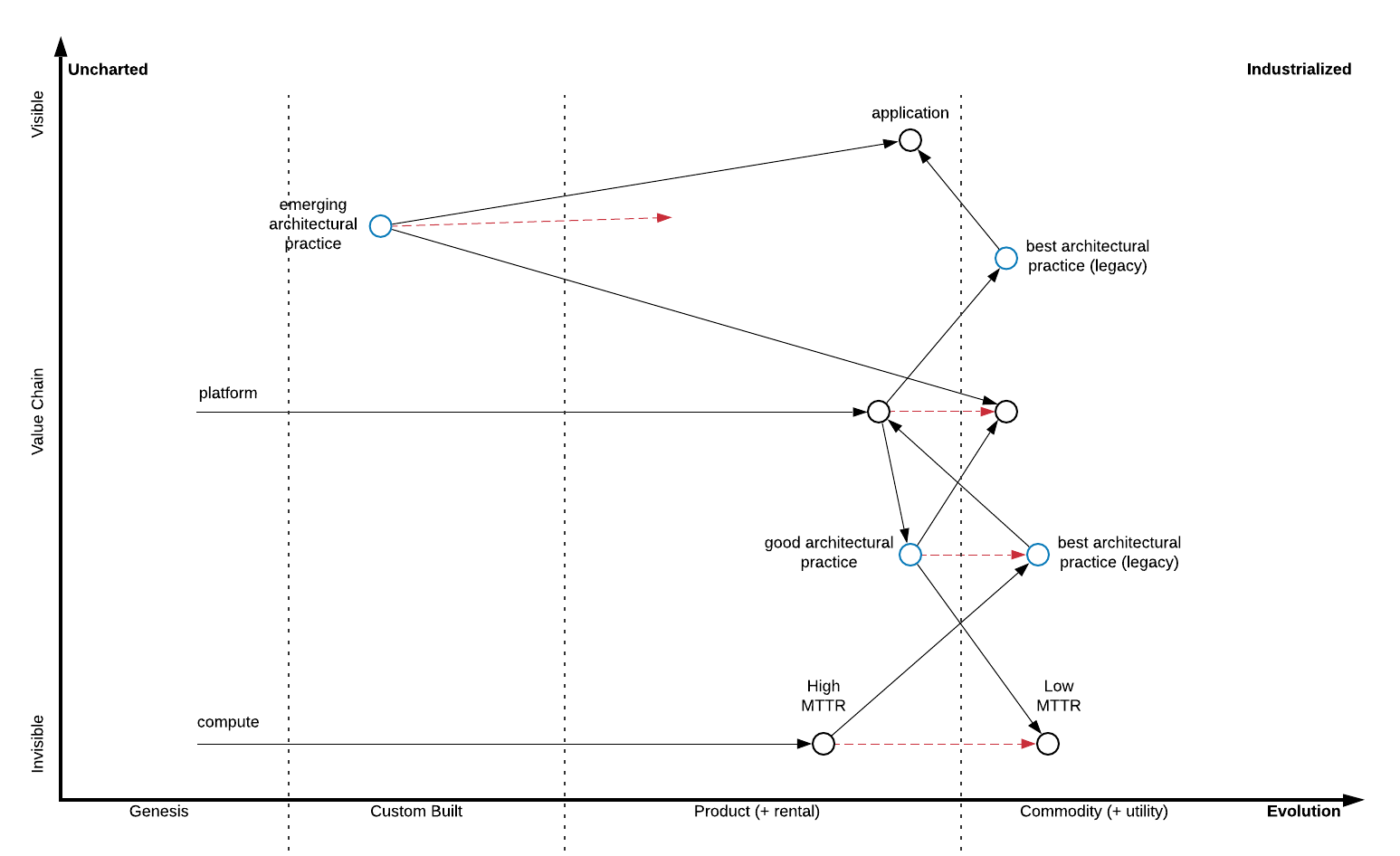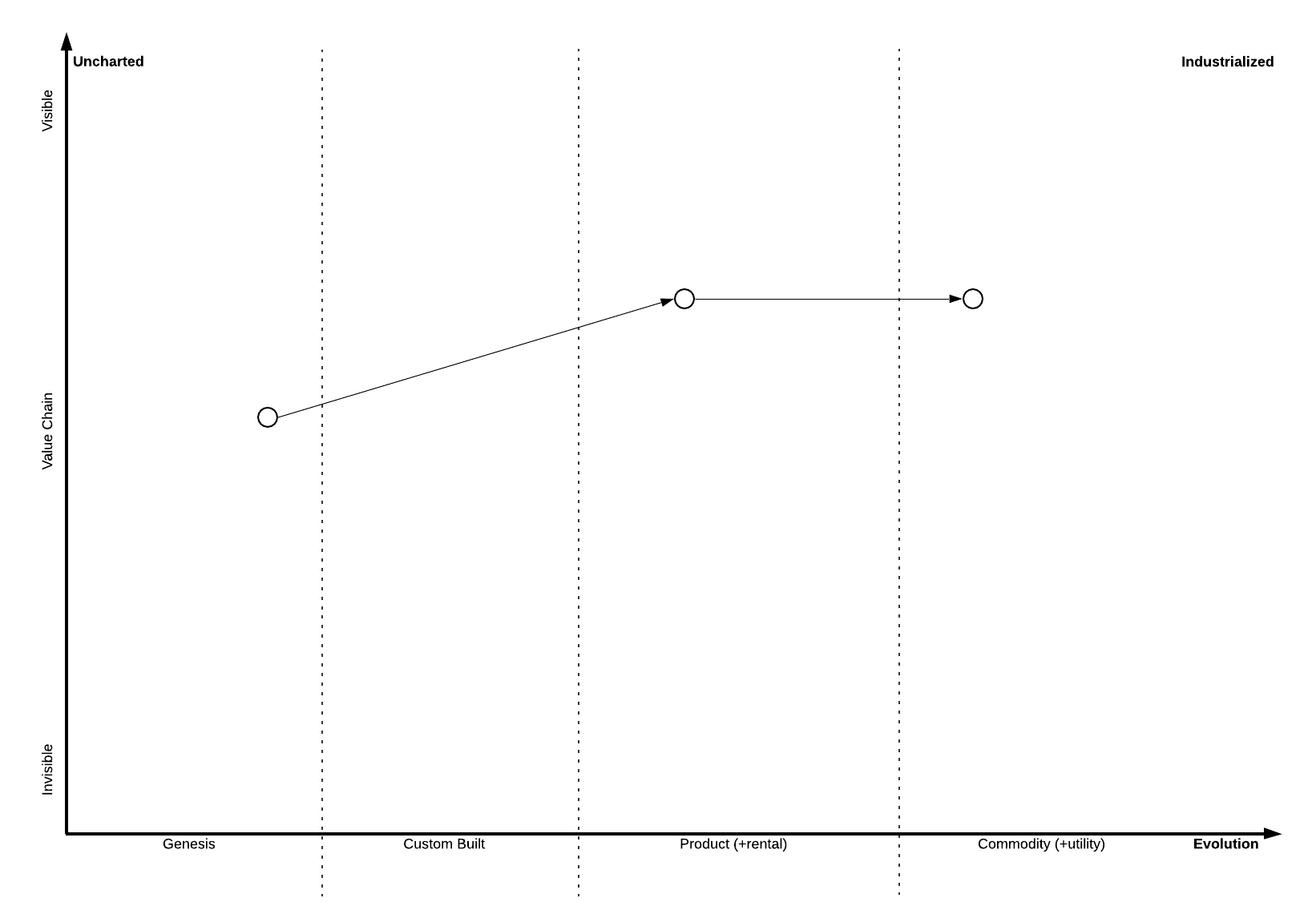
How to get started with Wardley maps
Lucid Content
Reading time: about 6 min
A typical approach to making business decisions is to determine the purpose for doing business and then go off gut instinct when making leadership decisions. But that approach isn’t looking at the entire landscape in which the business operates, and that can lead to fatal errors. A great way to determine what the landscape is and the best approach for your particular business is crafting a Wardley map. That way, you and your company can make decisions based on facts, not conjecture, and significantly diminish your risk of failure.
What is Wardley mapping?
Wardley mapping is the concept of constructing a topographical map of your business to dictate important decisions and determine business strategy. Instead of mountains and rivers, a Wardley map contains the structure of an organization.
Wardley mapping was introduced by Simon Wardley, a CEO who had been dealing with the frustrations of an inadequate business strategy. When he reread Sun Tzu’s The Art of War, Wardley realized there was a direct connection between actual war and business strategy and incorporated aspects of this book into his own strategic decision-making process.

5 factors in the Wardley mapping process
To build a map, you’ll need to determine the context of your business “battle.” The process is based on what Wardley calls the Strategy Cycle, where professionals go through and consider Sun Tzu’s five factors before they make decisions:
- Purpose: This is the force that compels you to do what you do and make what you make. It’s the higher reason for doing your work, often called your moral imperative.
- Landscape: This is the context: a mapping of the competitive environment in which you operate. If you think in terms of war, landscape includes the position of your soldiers and obstacles that stand in the way of your victory.
- Climate: There are always external forces manipulating the environment. In the same way that you don’t control the weather, you don’t control external forces like trends and the economy. But you can be aware of the climate and learn how best to prepare for it.
- Doctrine: Just as a religion has a core set of beliefs, your company will have a certain set of principles that will be applied to any situation.
- Leadership: This is the strategy that you’ll determine after you consider your purpose, landscape, and climate.
Let’s dive deeper into each of these components.
Purpose
The purpose component of the Wardley map requires you to determine or examine the catalyst driving your work. What moral imperative drives you to act and compels you to show up to work every day? Determining purpose is the first step in building a Wardley map.
Consider these questions at this stage:
- What’s the higher reason for this work?
- Why does our team or company exist?
- Why should others follow us?
Landscape
Just as if you were constructing a topographical map from scratch, constructing a Wardley map takes a very practical look at what is actually there. An inaccurate model of a business landscape is just as useful as a map of Florida without swamps and lakes.
The compass used in the Wardley Map landscape is user needs. And, instead of an army, food, and weapons, your supporting forces are a value chain of capabilities that are necessary to fulfill your customer’s needs. You will position capabilities on a Wardley Map based on their visibility to the user and the stage of evolution those capabilities are in.
To make an accurate map:
- Identify the users you’re serving. Add your customer to the map.
- Identify the needs you have to meet. Create branches off of your user to list all of their needs.
- Identify the capabilities required to meet the needs.
- Determine where each capability is in terms of its evolution. (See this cheat sheet to determine which of the four stages of evolution fits.)
Climate
Climate involves the external forces acting upon the landscape.
It can best be understood as a story of industrialization. For instance, if you were to buy some mints from the corner store in England during the 1700s, you wouldn’t be given a tin; that would be far too expensive. But now many mints like Altoids come in a tin because a tin box is easy to produce now, thanks to the larger forces acting upon the competitive landscape.
There are two patterns that emerge from climate:
1. Everything evolves through supply and demand competition
Components will change so companies can gain an advantage over their competitors.
Returning to the tin example, with more people and more bad breath, it was important that mint manufacturers find a way to gain advantage over their competition. That meant better mints and better packaging in which to store them. Hence, the advent of the pocket tin. Without competition, there would be no reason for products to evolve and become industrialized.
2. Characteristics change as capabilities evolve
The characteristics of a component in an uncharted space will be different than the characteristics of that same component once it’s industrialized.
For example, once Altoids began selling more mints and needed to mass-produce tins, this component evolved from rare to ubiquitous and from having a competitive advantage over no-name bagged mints to the cost of doing business. Your company will need to manage the entire process of evolution from uncharted to industrialized.
Doctrine
Doctrine is the best way of training your employees in your specific climate. You’ll need to determine the methodology you’ll employ and use it consistently throughout the organization. Instead of training your army in jiu jitsu, you’ll train your people in a chosen methodology (Six Sigma, Lean, Agile, etc.).
The key is to train your team consistently in the determined way for more reliable outcomes. Using the same methodology across the organization is similar to adopting a specific language: When everyone’s using the same system, they’re all able to understand one another.
Leadership
This is the “battle at hand.” Think of leadership in the context of the four other factors determining your map.
Consider using SWOT analysis: Evaluate your strengths, weaknesses, opportunities, and threats as a company. That way, you’re looking at the conditions that would lead to the outcome you desire instead of assuming one approach taken decisively at the outset would lead directly to a win. It’s a subtle shift to thinking more about the overall strategy instead of just a means to an end.
For instance, baking a loaf of bread requires more than just turning on the oven, even though that is indeed what cooks the bread. There are many factors at work, from the type of flour you use to the time it takes for the dough to rise to the humidity in the air. Not accounting for one of the conditions will likely cause the bread to fail.
It’s the same in leadership: If you don’t look at every condition involved in the desired outcome, you’re less likely to end up with a positive result.
Start completing these five factors for your business strategy in context using a Wardley map template.

Considering your entire business in context—from climate to purpose—is key to crafting a better business strategy and for making business decisions that are more likely to result in the desired outcome. A Wardley map will help you determine where to go, keep everyone on the same page, and provide concrete evidence to back up the decisions you make.

Create your own Lucidchart account to start building your own Wardley map.
Sign up todayAbout Lucidchart
Lucidchart, a cloud-based intelligent diagramming application, is a core component of Lucid Software's Visual Collaboration Suite. This intuitive, cloud-based solution empowers teams to collaborate in real-time to build flowcharts, mockups, UML diagrams, customer journey maps, and more. Lucidchart propels teams forward to build the future faster. Lucid is proud to serve top businesses around the world, including customers such as Google, GE, and NBC Universal, and 99% of the Fortune 500. Lucid partners with industry leaders, including Google, Atlassian, and Microsoft. Since its founding, Lucid has received numerous awards for its products, business, and workplace culture. For more information, visit lucidchart.com.
